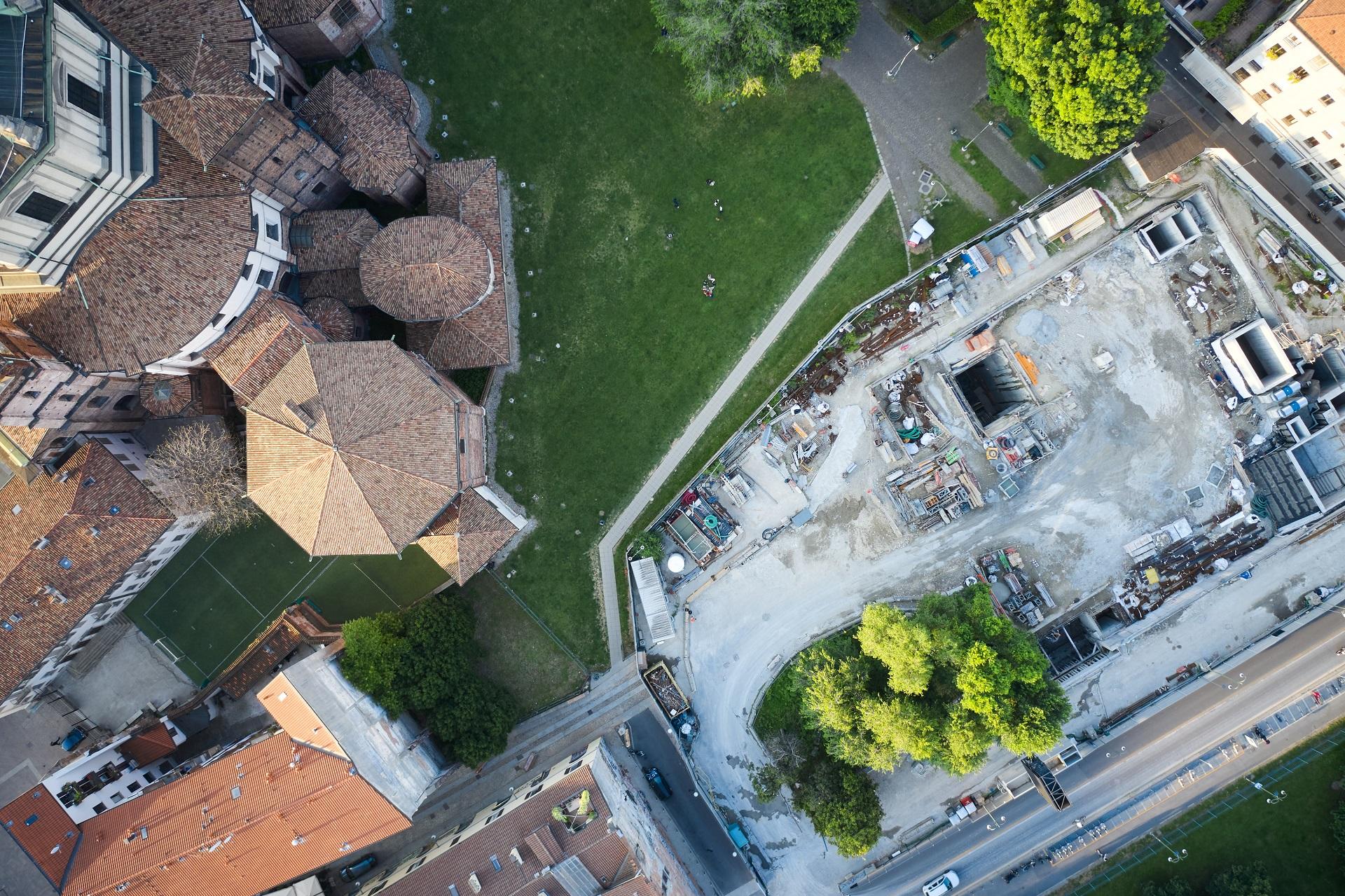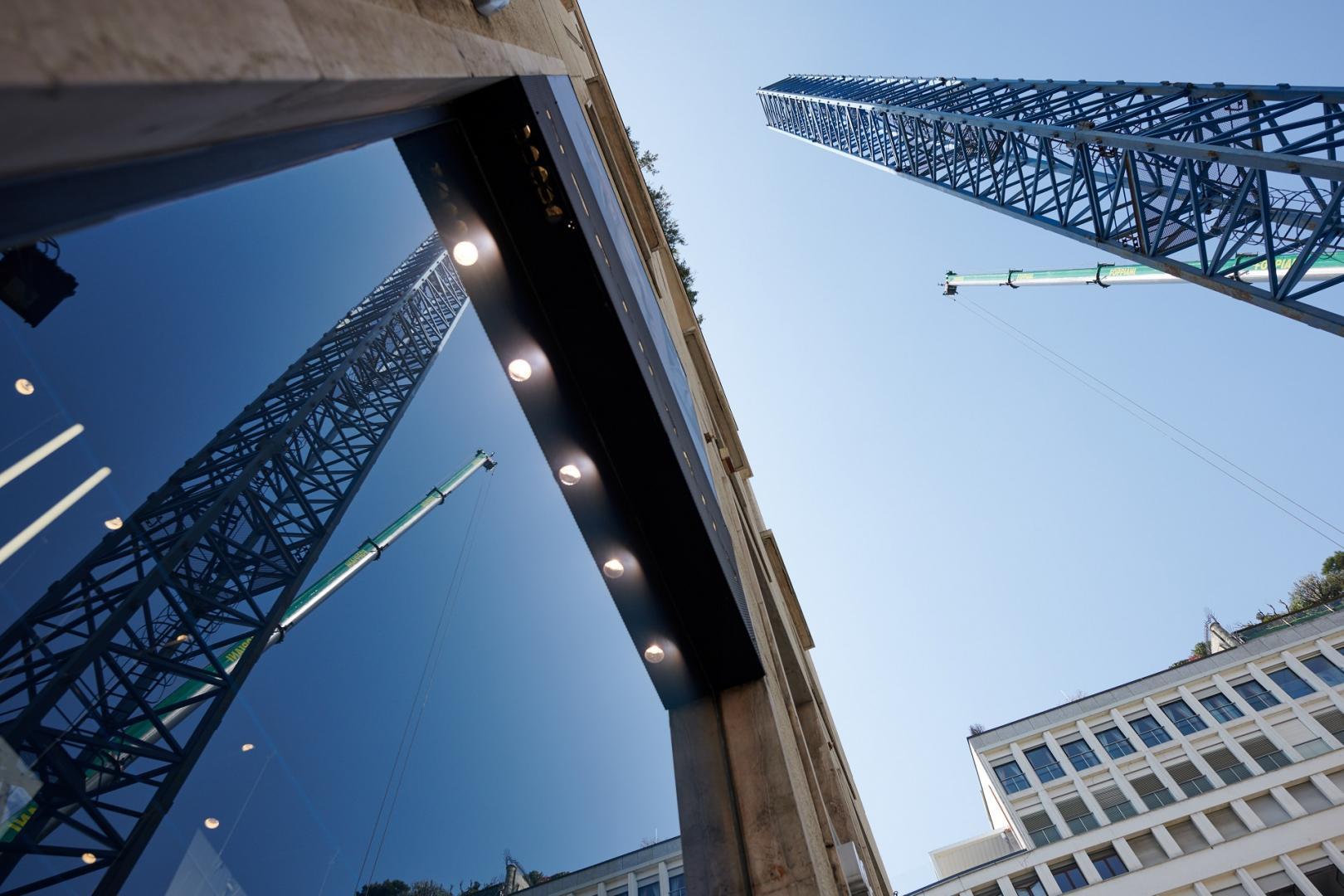Safe excavations
Milan’s new M4 Metro: the line that runs through the ancient heart of Milan

Protecting the city’s historical and artistic heritage during Milan’s M4 construction works
The M4 has formed an important chapter in the history of Cerchia dei Navigli, an extremely delicate area for carrying out such a massive engineering feat. It is here that the TBM (tunnel boring machine) excavated the route for Milan’s M4, passing under highly prestigious historical and artistic buildings like the Waldensian Evangelical Church on via Francesco Sforza, the churchyard of the Basilica of Sant'Ambrogio in piazza Sant'Ambrogio, the Ca 'Granda, the Columns of San Lorenzo and the Torre Merlata between via di San Vittore and via Carducci.
Safe excavations for the route and stops on Milan’s M4 line
To protect Milan's historic and artistic heritage, the builders' consortium, led by Webuild, implemented a state-of-the-art technical control procedure that combines preventive analysis with continuous monitoring of the buildings on the surface. This procedure was already used by Webuild to build the driverless metro in Copenhagen and the Metro C in Rome. For stations and structures, this procedure involved archaeological assistance during preventive checks of the excavations. Works could only continue after the Superintendence gave its permission.
Passing through a highly populated urban centre involved exceptional commitment during the control and analysis phase, both for design purposes and for execution of the works. As an additional precaution, in Milan, the tunnels for the M4 were built at an even greater depth than the industry standard. During work on Milan’s M4, all geometric and structural data of the buildings affected by the tunnel excavation works was collected and carefully analysed to identify any issues that would have required preventive work.
This was also carried out with the help of inspections by specialist technicians, which led to a series of interventions concerning, among others, Casa Silvestri and Palazzo Serbelloni. Preventive safety work was also carried out on Villa Necchi Campiglio, a building that houses an important collection of valuable objects and needed to be preserved and protected from any possible risk.
Le macchine che hanno scavato i tunnel della Metro4Milano: ecco come funzionano le TBM - Geopop/Webuild
Safeguarding monuments along Milan’s M4 route
Alongside the analyses aimed at protecting the surface heritage, in order to safely build Milan’s new M4 metro line, various actions were taken to protect historic buildings, particularly their historical heritage.
To ensure the integrity of that heritage, some monuments were moved to avoid any risk caused by the passage of the TBM. This is the case with the Verziere Column, with the Statue of the Redeemer in Largo Augusto; the bust of Cesare Correnti, in Piazza della Resistenza Partigiana; the medieval wall in via Francesco Sforza; and the Monument of Our Lady of Resignation. These monuments have been relocated to their original position, after work on the M4 Metro was completed and after the cleaning and restoration activities requested by the Superintendence.
During the excavation of the stations and structures for the Milan M4, there were numerous findings of great historical and scientific value for archaeologists and the Superintendence, such as the necropolis, full of Roman artifacts, found near the Basilica of Sant'Ambrogio, one of the oldest churches in Milan.
All this work to safeguard the artistic heritage was completed with the collaboration of institutions, the client, the Superintendence of Cultural Heritage and thanks to the know-how of Webuild, which leveraged its extensive experience in building metro lines and underground work in large, complex cities.
M4 Metro Line Photogallery
Scavi in sicurezza metro M4 Milano – Webuild
Stories: Le persone dentro e fuori i cantieri - Guido Mannella, Metro M4 Milano

Milan's M4: sustainable mobility serving the city
Milan’s M4 Metro is a unique work, in mobility, environmental andsustainability terms, which strengthens the Lombard city’s ecological footprint. It also brings significant environmental, economic, and collective benefits. Milan's M4 is able to transport 86 million people, every year. It prevents more than 180,000 car trips every day and therefore significantly reduces greenhouse gas emissions.